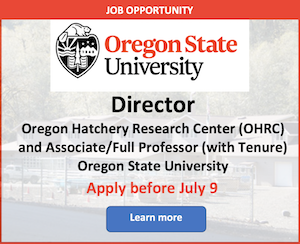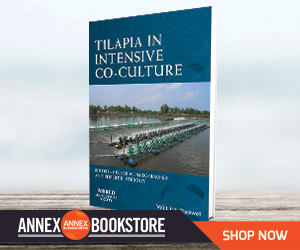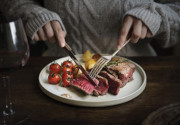| |
| |
 |
 |
| |
 |
|
@{mv_date_MMM d, yyyy}@ |
|
| |
 The voice of the BC farmed salmon industry noted the shortcomings of a study that points to aquaculture as the source of piscine orthoreovirus (PRV) transmission to wild salmon.
» Read more
The voice of the BC farmed salmon industry noted the shortcomings of a study that points to aquaculture as the source of piscine orthoreovirus (PRV) transmission to wild salmon.
» Read more
Conservation deal makes farmland owned by California oyster grower off limits to industrial development.
» Read more
AquaBounty made its first harvest of genetically engineered Atlantic salmon in the US in June, a milestone 30 years in the making.
» Read more
|
| |
 |
 |
| |
|
| |

Intensive tilapia co-culture is the commercial production of various species of tilapia in conjunction with one or more other marketable species. Tilapia are attractive as a co-cultured fish because of their potential to improve water quality, especially in penaeid shrimp ponds, by consuming plankton and detritus and by altering pathogenic bacterial populations while increasing marketable production.
Tilapia in Intensive Co-Culture is the latest book in the prestigious World Aquaculture Society (WAS) Series. It will be of great use and interest to researchers, producers, investors and policy makers considering tilapia co-culture in terms of environmental and economic sustainability.
>> Learn more |
| |
|
| |
 While a Land Grant college in each state also runs the Sea Grant program, the “cow people” at each college outnumber the “fish people” by an order of magnitude or two. Thus, the impact of the Sea Grant program to seafood production has been minor at best.
» Read more
While a Land Grant college in each state also runs the Sea Grant program, the “cow people” at each college outnumber the “fish people” by an order of magnitude or two. Thus, the impact of the Sea Grant program to seafood production has been minor at best.
» Read more |
| |
 |
 |
| |
|
| |
 Data-driven decision-making is still in its infancy in animal protein production but innovations are happening to improve farm production, management and risk mitigation.
» Read more
Data-driven decision-making is still in its infancy in animal protein production but innovations are happening to improve farm production, management and risk mitigation.
» Read more
Dr. John Buchanan leads the genetics team at the Center for Aquaculture Technologies (CAT) based in Prince Edward Island and San Diego, California. The organization provides the industry solutions involving breeding programs and genetic tools.
» Read more
|
| |
|
| |

|
| |
|
| |
|
|
| |
| |











